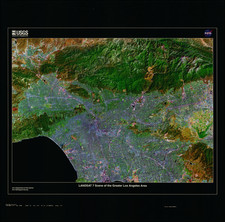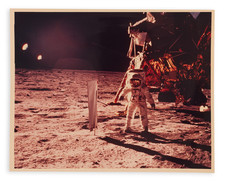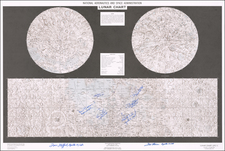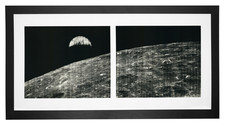Apollo 16 Traverses: Lunar Photomap, prepared and published by the Defense Mapping Agency Topographic Center in March 1975, offers a specialized view of the Apollo 16 lunar mission's routes and discoveries. Positioned at a scale of 1:25,000, the map delineates the landing site, traverse tracks, and specific areas named during the mission, all supplemented by selenographic coordinates.
The 1970s marked an epoch of heightened interest in lunar exploration, with the Apollo program at the forefront of human endeavor beyond Earth. The Apollo 16 mission, undertaken in April 1972, stood as a testament to this age of exploration, enhancing our understanding of the moon's topography, geology, and potential resources. This map captures the intricate movements and stops of the Apollo 16 mission, revealing the routes and areas of interest explored by the astronauts.
The Defense Mapping Agency, responsible for this detailed lunar representation, was an authority in topographical and geodetic mapping. Their collaboration with the Branch of Astrogeologic Studies from the USGS in Flagstaff, Arizona, underscores the symbiotic relationship between Earth-based geology and the burgeoning field of astrogeology, further showcasing the gravity of such lunar missions in advancing scientific collaboration and understanding.
The map indicates newly approved lunar names such as "Baby Ray," "Cinco," and "Stone Mountain," signifying the incorporation of novel features into our lunar lexicon. This addition of nomenclature not only denotes the expanding frontiers of lunar understanding but also acknowledges the profound human touch on an extraterrestrial body. The reference to photographic coverage, originating from the Apollo 16 panoramic taken in April 1972, further testifies to the technological prowess of the era.
This lunar photomap stands as a significant record, not only for its immediate scientific implications but as a testament to humanity's insatiable quest for knowledge and exploration. Through the intricate pathways and designated sites, it encapsulates the sheer determination and capability of the era's space exploration missions, shedding light on a unique period in the history of human ambition and achievement.
The Apollo 16 mission, launched on April 16, 1972, was the tenth crewed mission in NASA's Apollo space program and the fifth to successfully land humans on the Moon. Commanded by astronaut John Young, with Charles Duke serving as Lunar Module Pilot and Thomas Mattingly as Command Module Pilot, Apollo 16 spent over 71 hours on the lunar surface, primarily in the Descartes Highlands. This mission marked the first time astronauts explored the highlands area, collecting over 200 pounds of lunar samples for analysis back on Earth. Apollo 16, as a critical part of the broader Apollo program, contributed significantly to our understanding of lunar geology and paved the way for future manned space exploration.












![(Apollo 14 - Recovery Tracking Manuscript) [Post lunar landing recovery map and related ephemera from aboard USS New Orleans including NASA issued Apollo 14 insignia patch] Apollo Mission Plotting Chart (AMP) 4th Apollo Edition, January 1969.](https://storage.googleapis.com/raremaps/img/small/76611.jpg)
![Apollo Earth Orbit Chart (AEO) Apollo Mission 8. Sheet 1 of 3, Contains Revolution 1. For December 1968 Launch Dates [with:] Sheet 2 of 3, Contains Revolution 2. For December 1968 Launch Dates [and: Sheet 3 of 3, Contains Revolution 3. For December 1968 Launch Dates]](https://storage.googleapis.com/raremaps/img/small/95707.jpg)
